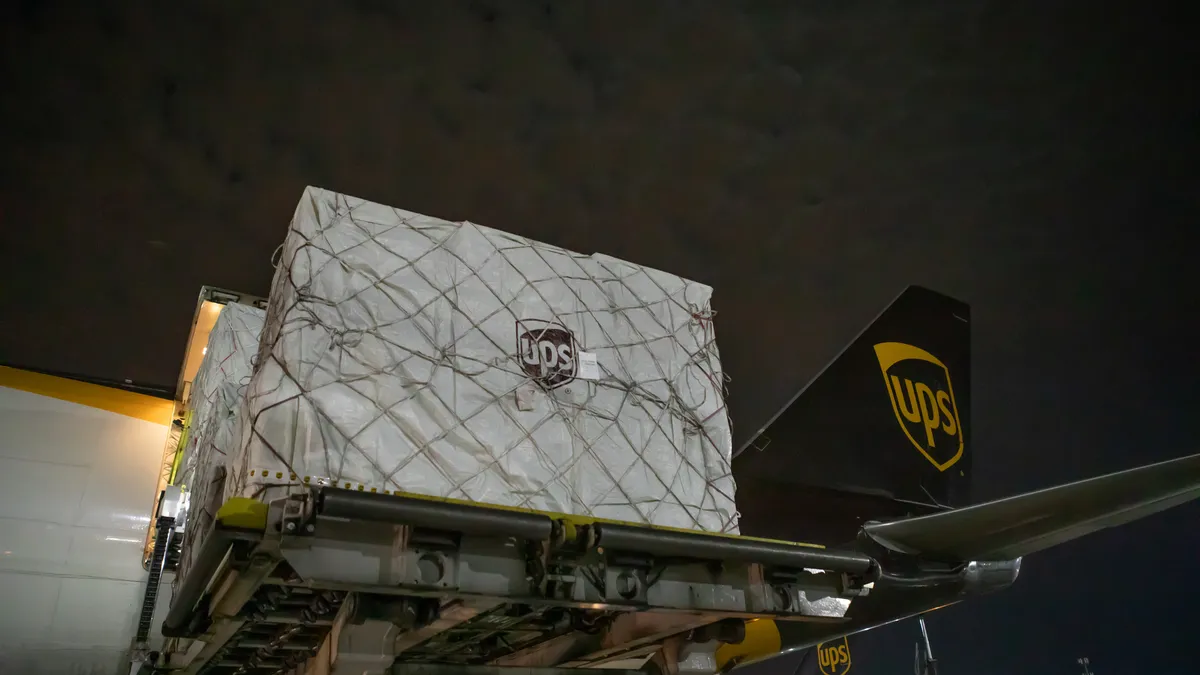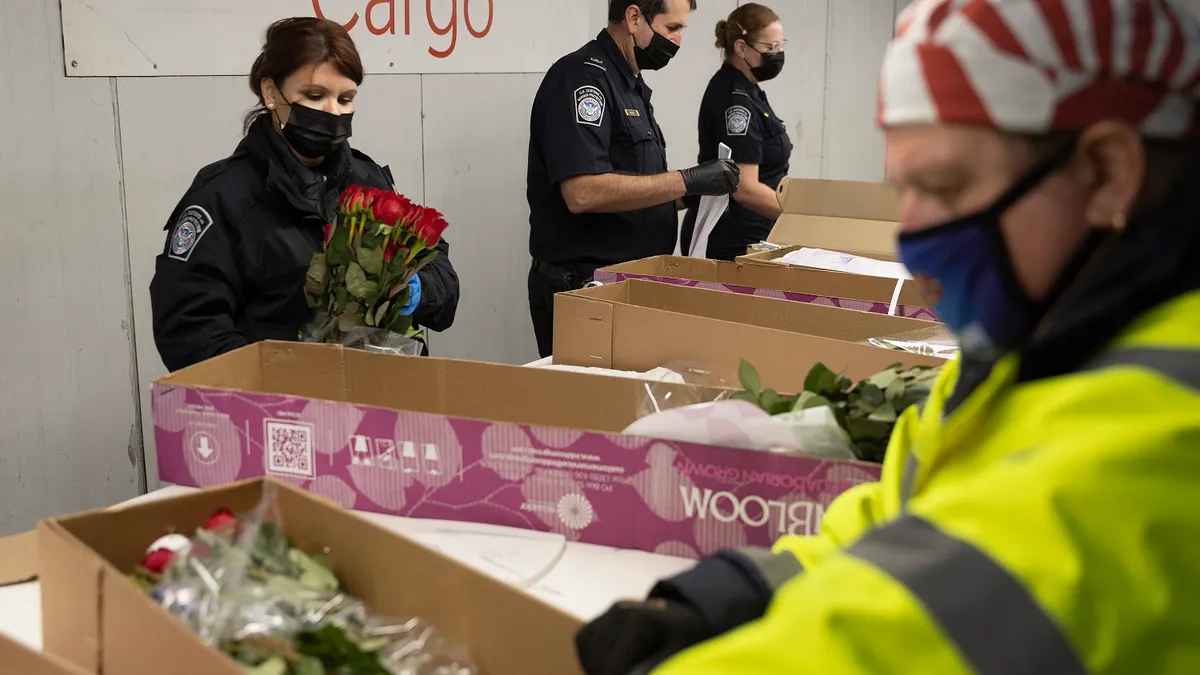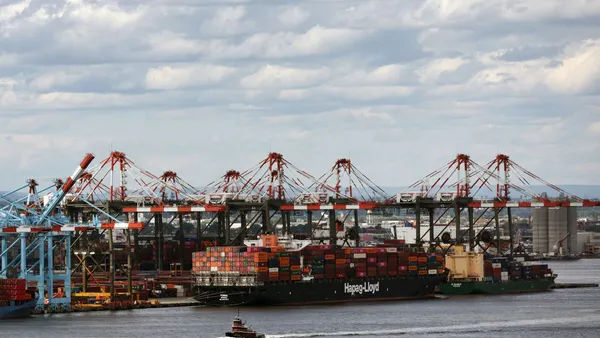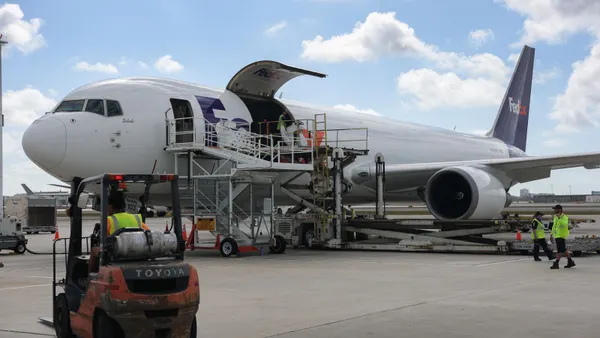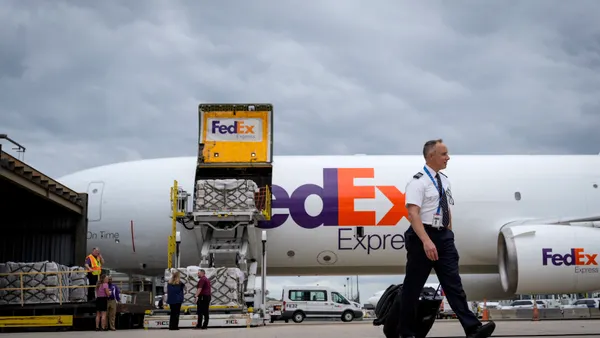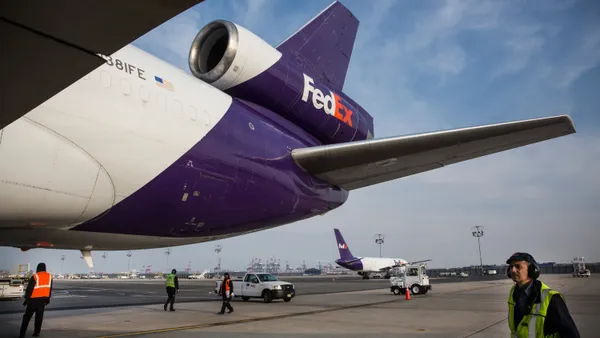Dive Brief:
- The U.S. Postal Service's shift from FedEx to UPS as its primary air transportation provider has provided the agency with lower contract rates and other benefits, according to a June 23 report from the USPS Office of Inspector General.
- The Postal Service reduced its air transportation spending by 43% year over year in Q1 of fiscal year 2025, which ran from Oct. 1 to Dec. 31, the report said. The UPS contract, which the OIG said has an estimated value of $10 billion, took effect one day prior to Q1.
- Compared to the previous FedEx deal, the new UPS contract also allows the Postal Service to commit less volume, provides more planned capacity and features a more stringent on-time transportation requirement, the report said.
Dive Insight:
Upon winning the Postal Service contract last year, UPS executives touted UPS’ network flexibility as a draw for the agency. UPS CEO Carol Tomé said the carrier could tap into regional gateways outside of its main air hub, allowing volume to travel point-to-point without service constraints. The OIG report appears to agree.
"Historically, the Postal Service has spent over $3 billion annually across multiple air carriers to support mail movement," the OIG said. "However, with a new air cargo contract in place, the Postal Service has secured a more favorable agreement, one that offers increased flexibility at a reduced rate."
The Postal Service assigned 85% of its air volume to UPS and 4% to FedEx in Q1 of FY2025, per the OIG report. The agency has transitioned First-Class Mail and Priority Mail volume to UPS, along with some Priority Mail Express shipments. The USPS still uses FedEx for volume requiring special handling, such as hazardous materials, live animals and perishables.
Amid the transition, the Postal Service is relying less on air carriers overall, posting a 7% YoY drop in pounds of mail assigned to air transportation in Q1, according to the OIG report. This reduction aligns with the agency's push to move more volume via ground transportation than air cargo to trim costs.
The transition to UPS hasn't been spotless, however. According to the OIG report, packages containing hazardous materials have mistakenly entered UPS facilities at times, despite protocols in place to identify and send "HAZMAT" volume to its correct destination. Eighty-four out of roughly 29,000 HAZMAT packages assigned to FedEx “erroneously moved end-to-end” through UPS' network in Q1, the report said.
"While we recognize that this represents a small percentage of the total HAZMAT packages assigned to the previous carrier’s network, tendering HAZMAT to the wrong network poses a risk to the security of the mail," the OIG said.
The Postal Service has worked to mitigate hazardous material issues, including by implementing new software on processing machines to detect HAZMAT markings and conducting training sessions for employees on proper acceptance procedures, per the report.
Editor's note: This story was first published in our Logistics Weekly newsletter. Sign up here.



